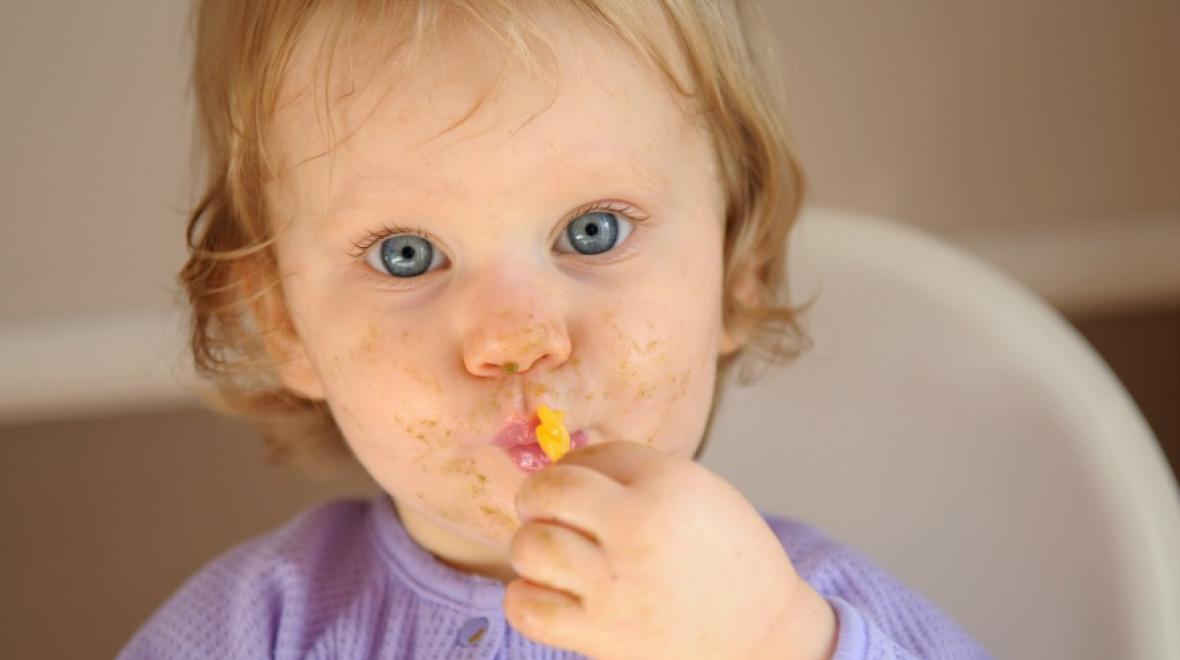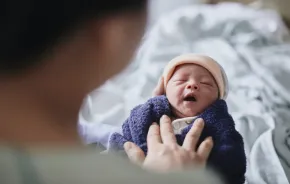
I first heard of baby-led weaning when my slightly hippy sister-in-law sent my 7-month-old niece for a visit with a packed lunch. When I opened the bag, I was surprised to find meatballs and sweet potato spears instead of the typical baby food. After an exchange of texts, I had a newfound understanding of baby-led weaning, which is essentially an alternative way to introduce your baby to solid food that doesn’t involve traditional purees or mushy rice cereal.
What is BLW?
Baby-led weaning, or BLW, means that when your baby is ready to start solid food, you offer them soft chunks of food on their high chair to grasp and try themselves, instead of spoon-feeding purees or powdered cereal.
The name was coined in the early 2000s by British health visitor and midwife Dr. Gill Rapley. She believed this practice would help parents easily introduce solid foods to their kids.
“Doing a master's degree gave me the chance to look at whether babies would move on to solid foods spontaneously if they were given a chance. The answer was not just that they would but that it became an easy and pleasant experience for the parents too,” she said. As a parent, a potentially easy and pleasant experience does sound appealing, especially when it comes to feeding your baby.
What are the benefits?
While BLW became quite popular in England, parents in the United States are only beginning to hear about it. But there are quite a few reasons to jump on board the BLW train, according to "Parents Magazine." One of the main benefits of BLW is that babies are introduced to many different textures and scents of food from a very young age, building their tolerance for a wider range of both of those.
With BLW, babies are also constantly working on their fine motor development, grasping food and using hand-eye coordination to get that food into their mouths.
Your baby will be eating a modified version of what the whole family is eating, which cuts down on preparing separate meals for different family members at an early age.
Finally, babies who are offered chunks of food to start their solid food experience are learning how to decide when they’re full or not because the parent isn’t constantly shoving spoonfuls into their mouths and deciding for them.
How do I start?
The baby-led weaning website and book by Dr. Rapley are good places to start for tips, tricks and recipes. If you’re interested in trying baby-led weaning with your baby, you’ll want to wait until he or she is at least six months old and can sit up unassisted. Your baby needs to have lost the thrust reflex that pushes food straight back out of their mouth when it enters, and he or she needs to be able to grasp and hold onto finger-sized chunks of food.
Instead of offering spoonfuls of purees, you’ll offer your baby finger-shaped chunks of soft foods to start, like peaches, bananas, melon, scrambled eggs, meatballs, broccoli or toast sticks. Anything they can easily grasp and munch is a good place to start, but keep in mind that you’ll want to offer foods that can be mushed on the roof of their mouths with their tongues since they aren’t able to chew properly yet. You should cook foods like sweet potatoes or carrots enough that babies can grasp with their hands but still mush with their gums and tongue.
As you would with introducing purees, you’ll want to start with one new food at a time to monitor for potential allergic reactions and for the risk of choking. However, studies have shown that so long as you are offering finger foods and not choking hazards (like whole grapes or nuts), the risk of choking is no higher with BLW than with the traditional introduction to solids.
Whether you start with broccoli or bananas, you’ll want to pull up a chair and sit with your baby as they start their baby-led weaning journey. It’s bound to make a pretty adorable mess!











